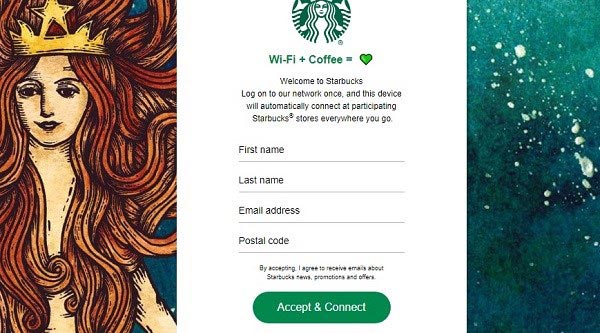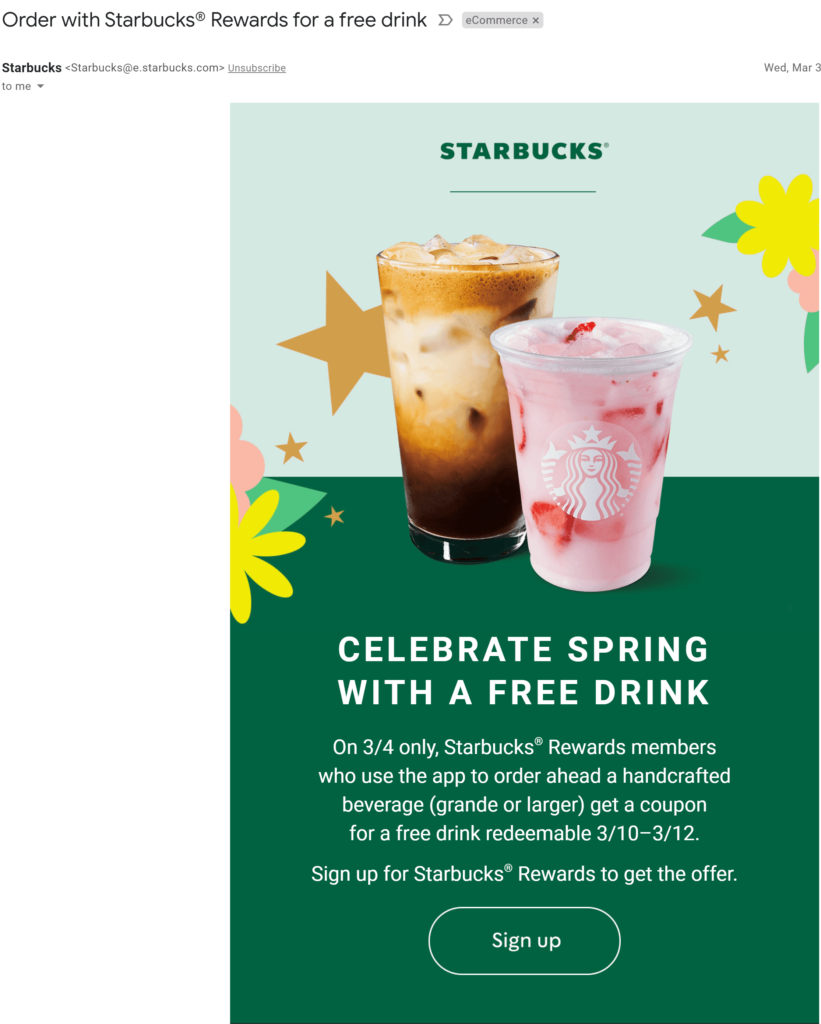Story # 2 - Omni-channels
How Starbucks Omnichannel Drives Repeat Sales
Going into 2021, omnichannel retailing is becoming table stakes for eCommerce and traditional brick and mortar alike.
Starbucks omnichannel strategy is a great case study in how to deepen customer relationships and drive repeat pruchases. Their success with omnichannel retailing provides a playbook of successful omnichannel tactics.
Each section will first look at specific strategies and tactics Starbucks is using today. Then, we will draw specific action steps eCommerce stores should take.
How Starbucks Omnichannel Strategy Drives Channel Expansion
In 2018, Starbucks had a problem. While their most loyal group of customers were actively enrolled in Starbucks Rewards, that left 60 million customers a month who had no digital relationship with the brand at all.
Once identified, establishing a digital relationship with these customers became the cornerstone for expanding Starbuck's omnichannel retailing strategy.
1. Create Incentives and Force Channel Adoption
In March 2018, the company decided to gate free wi-fi.
In order to access the internet, customers first had to register with an email address. In other words, they forced a digital relationship, gaining permission to contact customers via a new channel (email) in exchange for access to free wi-fi.
Internally, customers who have inputted their email but have yet to sign up for Starbucks Rewards (SR) are called "digitally registered customers".
Since creating this category, they've added 10 million digitally registered customers to their database. In their last earnings call, Executive Vice President & Global Chief Strategy Officer Matthew Ryan shared how they view this relationship:
“We have to think of it (digitally registered customers) as the top of the funnel; an enabler of the relationships that we can create that lead people eventually into the Starbucks Rewards Program.
Later , we’ll explore exactly how Starbucks executes this funnel. But first, I want to draw a few lessons that large eCommerce stores should consider.
We have to think of it (digitally registered customers) as the top of the funnel; an enabler of the relationships that we can create that lead people eventually into the Starbucks Rewards Program. - Matthew Ryan, Executive Vice President & Global Chief Strategy Officer, Starbucks
2. Reward customer loyalty with unique offers and experiences
We see the vision playout in Starbuck's triggered email campaigns. Many offers require customers to be enrolled in Starbucks Rewards. Below is a great example.
As the ad says, "Starbucks Rewards members who use the app to order ahead a handcrafted beverage (grande or larger) get a coupon for a free drink redeemable 3/10-3/12. Sign up for Starbucks Rewards to get the offer."
Embodied in the offer is a series of important actions Starbucks wants their customers to take.
- Utilize the Starbucks app to order ahead, part of their click and collect strategy
- Redeem in one week, to help further cement
Starbucks goes beyond unique offers for Rewards Members. They routinely create whole experiences for their customer base to take part in. Below is one example - their annual "Starbucks for Life" event. Reward Members can collect game pieces by purchasing select items. Rewards range from $500 gift cards, Bose Earbunds, and, as the name implies, Starbucks for Life!
3. Lessons for Ecommerce in Channel Adoption
Channel adoption is fundamental to omnichannel retailing. It is worth incentivizing by whatever means possible.
Starbuck's playbook is simple. First, identify what your strongest customer touchpoint is and incentivize channel adoption with a clear benefit during that touchpoint.
In their case, they already had 28,000 physical stores with 75 million monthly customers. They identified a key benefit, and parlayed that service into new customer relationships via email.
For many eCommerce stores, their strongest customer touchpoint is online (their site). Barilliance equips you with a number of tools to convert site visitors into whichever channel makes the most sense for your business.
- Some of our most popular features for doing this include:
-
- You can see an example of onsite personalization below.
- To begin their omnichannel retail strategy, this client starts with a personalized offer, only seen by visitors who have not already submitted their email.
- The offer is presented in the from of a sliding message bar.
- Once a new visitor reveals interest by clicking on the bar, a pop-up is displayed.
- In exchange for their email address, they will receive a 10% off code. In implementing these solutions, it is important that you control the user experience.
- For example, this particular tactic isn't shown on mobile devices, nor to returning customers who they already have a relationship with. With Barilliance, you can easily define any number of segments to present unique offers to.
-
Whichever number of tactics you employ, you want to give a concrete, exclusive benefit to creating a continuous relationship with your brand.
As we’ll see, establishing multiple channels as part of your own omnichannel retailing strategy will give you multiple ties to customers, allow you to gather more data on each client, and ultimately create personalized offers that increase order frequency and AOV.- How Starbucks Uses Omnichannel Retailing to Increase Repeat Purchases From New Channels
- How do you capitlize on new customer relationships?
As Matthew Ryan shares,
“We’re not in the business of creating digital relationships for digital relationship’s sake. They’re an enabler for us to communicate and talk to our customers.” - We’re not in the business of creating digital relationships for digital relationship’s sake. They’re an enabler for us to communicate and talk to our customers. - Matthew Ryan
- Starbucks uses these newly acquired email addresses to drive retention and purchase frequency.
- While a variety of offers and communications are sent, two stand out.
First, is a recurring flagship offer: Happy Hours.
In this email, Starbucks sends a discount offer on a specific product category (such as teas, seasonal drinks, or frappuccinos). The offer is limited, often expiring same day and only available during certain timeframes.
The goal is to drive digitally registered customers into stores during non-peak hours. Offers are geared toward premium products, serving as a gateway to more profitable skus.
- Second, as alluded above, Starbucks views email as the first phase in their omnichannel retailing strategy. It is their first digital channel, not their last.
- The ultimate goal of digitally registered customers is to motivate them to become a part of their Starbucks Rewards program.
- Customers are given regular incentives to progress through the funnel. In the example below, they email an offer of a free drink when they create aSR account. The exact offers sent are personalized to the types of products a digitally registered customer has bought in the past.
Lessons for ECommerce in Driving RetentionHow do you create value to justify a continued relationship with your brand?In Starbucks case, they use a combination of one time discounts and ongoing loyalty rewards to drive purchase frequency. They also focus on customer adoption of more premium offers.Barilliance has a number of ways to help eCommerce stores replicate these tactics.- Create a 360 View of Customers to Develop Understanding of Customer Preferences
- To make effective offers, you need to be able to track customers across devices and shopping sessions. Barilliance tracks more than what products each customer has purchased.
-
- Frequency: Barilliance tracks site visits. You can segment based on first visit, last visit, or number of visits - giving you the capability to define your own segments of first time visitors, returning lapsed visitors, those who are in threat to churn, VIP customers, or whatever segment makes most sense to your business.
- Demographic Data: Information such as location and device type are automatically recorded.
- Brand Engagement: Lastly, you want to be able to track customer engagement overtime, including if they've responded to past offers, and if you need to trigger a follow-up.
- Use Big Data to Create Personalized Offers
Data
application is useless. Barilliance gives you the ability to use this data in a number of ways.













